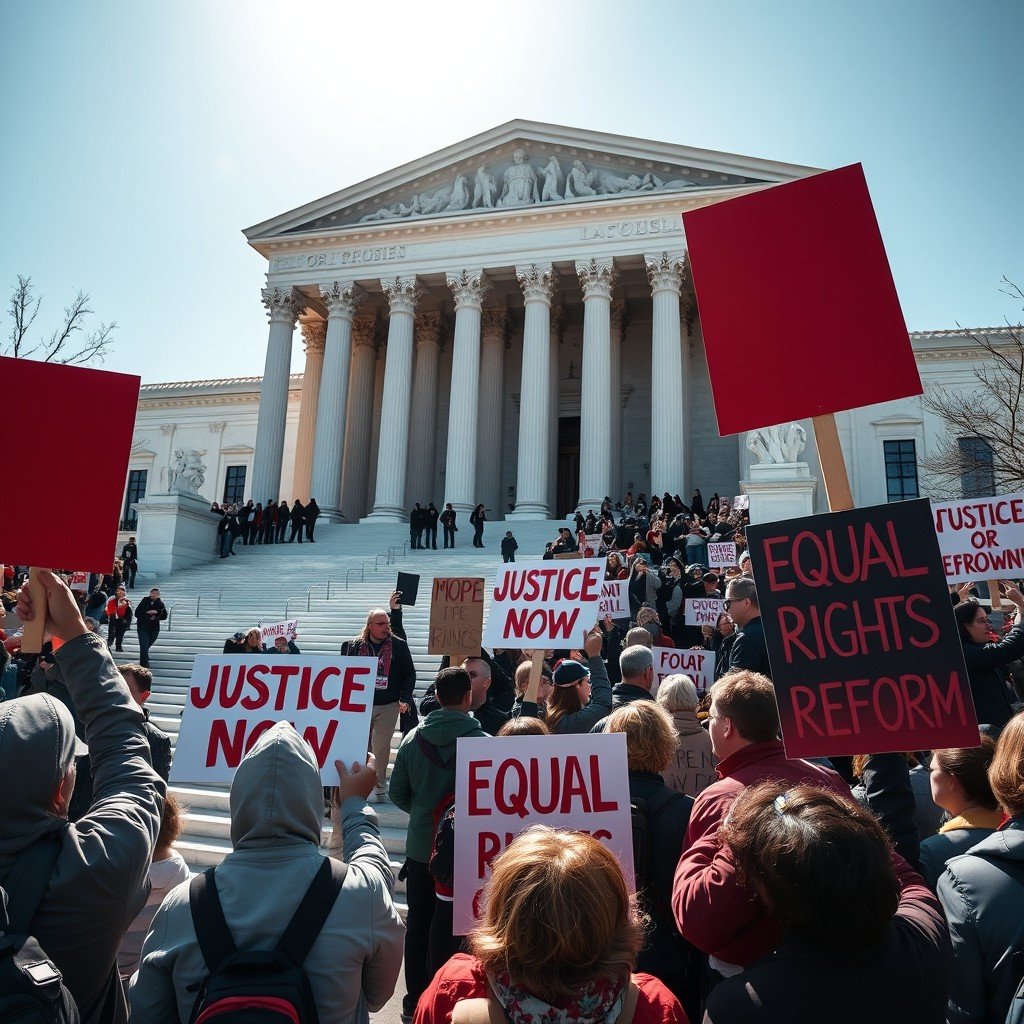Introduction to the Case
The Supreme Court case concerning the Trump administration termination case and the firing of probationary workers has emerged as a pivotal moment in the realm of employment law. This Trump administration termination case arose against the backdrop of the administration’s policies that were perceived to undermine the due process rights of employees on probationary status. The issue at hand rested on whether these workers had any legal protections against wrongful termination, a question that had significant implications for employment rights across various sectors.
Probationary workers, often viewed as being in a vulnerable position, traditionally hold limited protections compared to permanent employees. The Trump administration termination case led to the implementation of certain guidelines that further complicated this dynamic, leading to increased scrutiny regarding the power of employers to terminate these workers without just cause. The Trump administration termination case lawsuit emerged when affected employees and advocacy groups contended that the administration’s actions not only violated their rights but also set a concerning precedent for how employers treat probationary employees in the future.
This legal dispute underscores the broader implications of administrative policies on labor rights, as well as the necessity for judicial oversight in maintaining a standard of fairness in employment practices. The significance of the Trump administration termination case court’s ruling extends beyond the specific case, potentially influencing future interpretations of employment law related to probationary status and wrongful termination. As the legal landscape evolves, the Trump administration termination case sets a crucial benchmark for assessing the federal government’s role in protecting employment rights and ensuring just treatment for all workers, regardless of their employment status.
Key Arguments Presented

During the Supreme Court hearings regarding the Trump administration termination case and the firing of probationary workers, a range of arguments emerged from both sides. The administration firmly asserted its stance, arguing that it retained the authority to terminate probationary employees without cause. The basis of this assertion revolved around the idea that probationary status inherently permits greater discretion for employers to dismiss workers during this evaluation period. The Trump administration termination case legal representatives contended that probationary workers do not possess the same level of job security as permanent employees, and thus, the government should be granted the freedom to manage its workforce efficiently without unnecessary constraints.
Conversely, the employees and their advocates presented a formidable counterargument emphasizing the principles of workers’ rights and due process in the Trump administration termination case. They argued that even probationary workers should not be subjected to arbitrary firings and that some level of accountability should be imposed on employers. The coalition underscored that these workers are often vulnerable and deserving of protections against potential abuses, particularly highlighting instances of discrimination and retaliation in hiring and firing practices. They posited that a right to due process, even for employees in probationary roles, is crucial in safeguarding against unjust terminations.
The debate centered around these dual perspectives, with the administration advocating for unfettered managerial discretion and the opposition calling for a reevaluation of the legal protections afforded to probationary workers in the Trump administration termination case. This tug-of-war illustrated the complexities surrounding employment law and the extent to which the rights of temporary workers are recognized and enforced under federal regulations. The arguments presented encapsulated significant legal reasoning, shedding light on the broader implications for labor relations and employment practices in the United States.
Supreme Court’s Ruling and Implications
The recent Supreme Court decision concerning the Trump administration termination case and the termination of probationary workers during the Trump administration has significant implications for employment policies within federal agencies and government bodies. The court’s ruling addressed critical concerns regarding the constitutionality of the actions taken by the administration, particularly the methods and rationale behind firing employees who were still in their probationary periods.
The Trump administration termination case arose from multiple instances where probationary workers were dismissed without the opportunity for a hearing, raising essential questions about due process and employees’ rights under the Constitution. The Supreme Court justified its decision by emphasizing that while probationary employees possess fewer job protections than permanent staff, they are not completely devoid of rights. The court highlighted the need for fair procedures even among those who have not yet achieved permanent status. Such principles align with broader interpretations of worker rights and the protection of public employees from arbitrary administrative actions in the Trump administration termination case.
This ruling carries substantial ramifications for the future handling of employment practices, especially within federal entities, as seen in the Trump administration termination case. As agencies reassess their policies, there is an expectation that increased attention will be given to the rights of all employees, regardless of their probationary status. The implications extend beyond the realm of public service, potentially influencing state and local employment practices, emphasizing fairness, transparency, and accountability in workforce management.
Moreover, employers may need to ensure that their termination processes comply with the legal standards established by this ruling in the Trump administration termination case. This shift underscores the importance of adhering to due process in employment relationships, even when dealing with employees still under probation. Overall, the Supreme Court’s decision not only clarifies the legal landscape for federal employment practices but also sets a precedent that could reshape the treatment of probationary workers in various sectors across the United States, especially in the context of the Trump administration termination case.
Reactions and Future Outlook
The recent Supreme Court ruling regarding the Trump administration termination case and the dismissal of probationary federal workers has elicited a diverse range of reactions from various stakeholders. Legal experts have expressed mixed sentiments about the implications of the ruling. Some argue that the decision reinforces the authority of immediate supervisors to maintain a flexible workforce during probationary periods, potentially facilitating the federal government’s efficiency. Others, however, voiced concerns that this precedent may weaken protections for workers, creating an uncertain environment for labor rights and employment security in the public sector.
Civil rights organizations have voiced strong objections to the ruling in the Trump administration termination case, stating that it undermines the foundational principles of fair treatment and due process within the workplace. These groups argue that probationary employees, despite their status, deserve a level of protection against arbitrary dismissal and discrimination. They contend that the ruling could embolden future administrations to adopt policies that further degrade worker protections, thereby setting a troubling precedent for civil service rights moving forward.
Government officials have also weighed in on the Trump administration termination case, acknowledging the delicate balance between managerial discretion and employee rights. Several lawmakers have indicated the necessity for legislative measures to address these post-ruling concerns. As the legal landscape evolves, there is potential for fresh challenges to existing employment laws, particularly as upcoming administrations may advocate for contrasting employment policies. Future legal battles may arise around the issue of worker protections, raising questions about the rights of employees under various governance philosophies.
In conclusion, the Supreme Court’s decision regarding the Trump administration termination case not only reflects the complexities surrounding labor rights within the federal workforce but also highlights the ongoing debate among stakeholders. As discussions on rights and employment continue, adjustments in labor-related legislation could emerge in response to evolving political landscapes and concerns regarding employee welfare.
